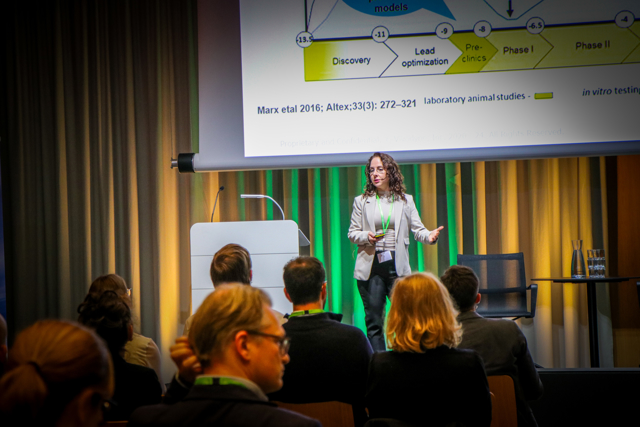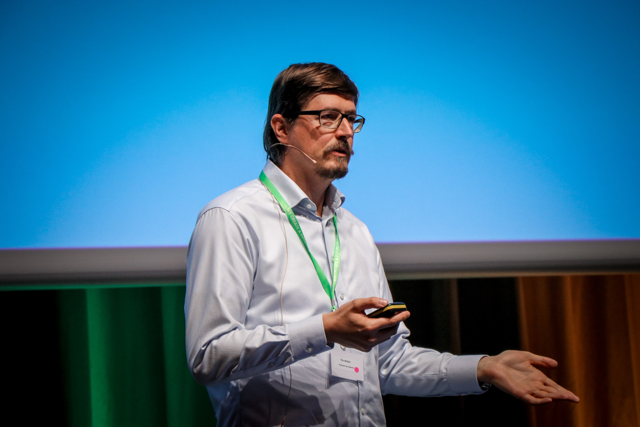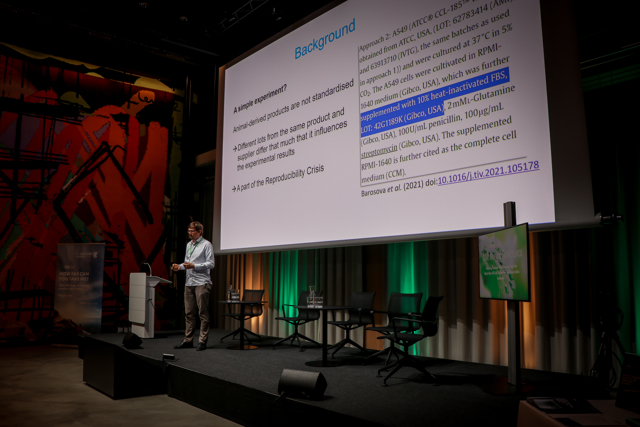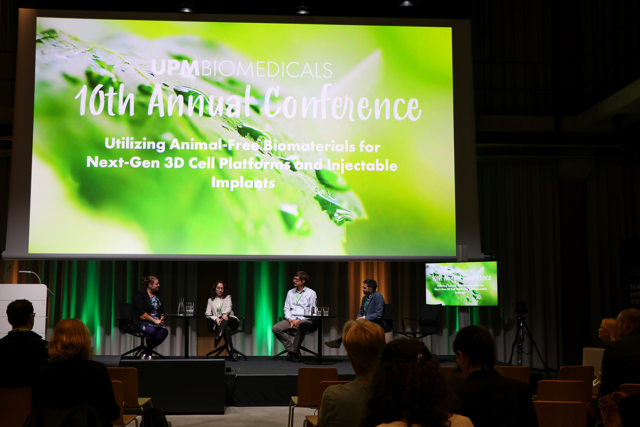The Future of Model Selection in Pharmaceutical Research: Insights from Pelin Candarlioglu
In pharmaceutical research, selecting the right model for drug development is a critical step that directly impacts success rates and resource efficiency. Pelin Candarlioglu, Director of Immunotherapy, highlighted the importance of evolving predictive tools and methodologies, such as organoids and microphysiological systems (MPS), to improve translational research success and decision-making within the industry.

The Importance of Predictive Validity
A central theme of Candarlioglu’s talk was predictive validity, which measures how effectively decision making tools forecast a drug’s efficacy and safety. Selecting the right model not only accelerates development but also minimizes the risk of costly failures by addressing translational weaknesses — instances where preclinical models fail to replicate clinical outcomes. This challenge is particularly pronounced in fields like , especially in fields like cardiology, neuroscience, and immuno-oncology.
Even modest improvements in early model selection and decision making can yield substantial cumulative benefits, significantly enhancing clinical success rates.
Evaluating and Validating Preclinical Models
Evaluating and validating preclinical models requires a structured approach, as outlined by Pelin. She emphasized four key pillars: biological recapitulation, assessing how well a model mimics human clinical conditions; experimental consistency, ensuring protocols align with clinical treatment regimens; statistical rigor, adhering to good clinical practices like randomization and reproducibility; and defined validity boundaries, understanding each model’s limitations and specific applications. She stressed that models should be evaluated not only for their accuracy but also for their relevance to the specific scientific and clinical questions posed in drug development.
Operational Considerations in Model Development
Candarlioglu also discussed the operational considerations of model usage, particularly the decision to develop models in-house or outsource them. She explained that this choice hinges on factors such as resource availability, expertise, and project timelines. For instance, project-specific models often require rapid development and clear deliverables to meet immediate needs, while capability-building models can afford more relaxed timelines and are designed for broader, more generalized applications. These considerations ensure that resources are allocated efficiently and that models are tailored to the goals of the project.

Transformative Technologies
Looking to the future, Pelin Candarlioglu highlighted the transformative potential of emerging technologies such as organ-on-chip and MPS. These innovative tools offer a unique combination of complexity and scalability, providing a critical bridge between preclinical and clinical research.
She underscored the importance and need for collaboration and standardization across the pharmaceutical industry to maximize their impact. Ongoing initiatives in Europe and the United States aim to create consensus-driven standards for model qualification, ensuring that these technologies are not only reliable, but also widely applicable in diverse contexts.
Leveraging AI and Big Data in Drug Research
Candarlioglu concluded by discussing the transformative power of AI and big data in predictive drug research. Automated systems that generate large-scale, reproducible human data can accelerate drug discovery by identifying patterns and predicting outcomes with unprecedented accuracy.
By integrating advanced technologies and fostering collaboration, the pharmaceutical industry can address existing challenges, improve R&D productivity, and accelerate the development of better therapies. This forward-looking vision underscores the importance of innovative, data-driven approaches in shaping the future of pharmaceutical research.
Towards Animal-Free Science: Insights from Tilo Weber
At the 10th Annual Conference, Tilo Weber, Scientific Officer for Animal-Free Science, shared his expertise on the challenges surrounding the use of animal-derived materials in research. With a strong scientific background and years of experience at the German Animal Welfare Federation, Weber advocates for a shift toward animal-free alternatives to enhance ethical practices, scientific reproducibility, and safety.

Challenges with Animal-Derived Materials
Weber opened by addressing the significant drawbacks associated with the use of animal-derived materials like foetal bovine serum (FBS), extracellular matrices, and antibodies, which are widely utilized in laboratories. These materials present multiple challenges, starting with variability and reproducibility issues. The variability in composition and lack of standardization in animal-derived materials often result in irreproducible experimental results, undermining scientific rigor.
Ethical concerns are significant, with sourcing practices often involving animal suffering, such as blood extraction from unborn calves for foetal bovine serum and the induction of tumour growth in mice for extracellular matrices. Additionally, safety risks arise from contamination with pathogens, such as viruses detected in commercial FBS, which jeopardize research integrity and potential human applications. Compounding these issues are regulatory gaps; while progress has been made in regulating animal testing, comprehensive guidelines for the production and use of animal-derived materials remain absent.
Innovative Alternatives to Animal-Derived Products
Weber highlighted several promising alternatives to animal-derived materials. Human Platelet Lysate, ethically sourced from expired blood donations, offers a solution that reduces contamination risks but poses scalability challenges. Chemically defined media present another viable option, being reproducible, pathogen-free, and ethically acceptable. Notably, innovations like the recently developed "Our Medium" demonstrate universal applicability by utilizing human-derived and recombinant proteins. Additionally, synthetic extracellular matrices and enzymes, including plant-based materials and recombinant enzymes, provide ethical and functional substitutes for traditional animal-derived products, further advancing the field.

Survey Findings: Knowledge Gaps and Barriers
Weber shared findings from a global survey of 551 scientists across 52 countries, shedding light on key challenges and opportunities in adopting animal-free materials. The survey revealed that while 43% of respondents showed interest in using animal-free alternatives, many were either unaware of their availability or viewed them as costly and difficult to implement. Additionally, over two-thirds of participants identified a significant gap in education on these materials, emphasizing the need for better resources, publications, and case studies.
To advance a modern scientific paradigm, Weber proposed several actionable steps, including increased funding for the development and adoption of animal-free alternatives, requiring researchers to document and justify their use of animal-derived or animal-free materials in publications, and introducing regulations to mandate the use of validated animal-free materials wherever feasible. For researchers, Weber recommended starting small by identifying animal-derived materials in their experiments, exploring existing alternatives, and collaborating to develop new solutions.
The Road Ahead
Weber’s presentation made a compelling case for transforming modern science into an animal-free discipline. By addressing the barriers of education, awareness, and regulation, the scientific community can foster reproducibility, ethical integrity, and innovation. While challenging, this transition holds the promise of a future where ethical, reproducible, and innovative science becomes the standard, paving the way for groundbreaking discoveries.
Insights from the Panel Discussion: Advancing Animal-Free Science
The panel discussion in Session 3 of the 10th UPM Biomedicals Conference brought together experts to examine the transition towards animal-free reagents and methodologies in both academia and industry. Panellists Pelin Candarlioglu, Andre Maya, and Tilo Weber, amongst others, delved into the barriers, solutions, and implications of adopting alternative practices.

Academia vs. Pharma: Who Leads the Change?
The discussion began with the question of whether academia or the pharmaceutical industry should take the lead in adopting animal-free reagents. Pelin Candarlioglu highlighted a UK survey that identified academic resistance to changing protocols as a significant barrier. She argued that pharma is more likely to adopt alternatives due to its focus on reproducibility and translation, even in the absence of regulatory pressure. Andre agreed, noting that academic conservatism often hinders progress. "Pharma has financial incentives," he said, "and academia will follow once the benefits become undeniable."
The need for Transparent Labelling
The panel emphasized the importance of clear labelling for animal-free products. Tilo proposed a system similar to energy-efficiency ratings, which could guide researchers in making informed choices. “A harmonized labelling system,” he explained, “would clarify ambiguous terms like ‘animal-free’ and ensure transparency.”
Pelin Candarlioglu suggested that the European Union could enforce such standards, noting that top-down regulations are often more effective than bottom-up initiatives. She also pointed out the need for labels indicating the reproducibility and quality of products to help researchers make better decisions.
Human-Derived Models and Challenges
While the goal of creating fully human-derived models is ideal, Pelin Candarlioglu and Tilo Weber acknowledged the practical challenges. Many systems still rely on animal-derived components like Matrigel, which compromises their “human” status.
“If we’re building human models, they should be fully human,” Pelin asserted. However, she noted that achieving this requires significant investment and incremental changes. The panel agreed that replacing animal-derived materials one step at a time—such as during new projects or when new students join labs—is a feasible approach.
Reproducibility and Data Management
Reproducibility was identified as a critical challenge in academic research, with panellists proposing several solutions to address the issue. Key recommendations included transparent reporting of methods and materials, testing experiments across multiple laboratories, and adopting standardized protocols like those used in the pharmaceutical industry. Andre Maia underscored the importance of prioritizing data management and documentation in academia, highlighting the potential impact of adhering to FAIR data principles and maintaining proper records. “Fair data principles and proper record-keeping,” he stated, “can make a significant difference.”
Advancing Animal-Free Research: Alternatives and Interim Strategies
Tilo Weber addressed concerns about the physiological relevance of animal-free media, questioning the continued reliance on foetal bovine serum (FBS). “If FBS is not physiologically relevant to human cells,” he argued, “why hesitate to use chemically defined alternatives? It might be closer to how cells behave in the human body.” He also highlighted valuable resources like the FCS-free database, which provides comprehensive information on animal-free options. Recognizing that a complete shift away from animal use is not yet feasible, the panel emphasized the importance of investing in refinement practices as an interim strategy. “Until we achieve full replacement,” Andre Maia concluded, “we must focus on minimizing animal use and improving conditions.”
Shaping the Future of Ethical Research
The session wrapped up with thanks to the panellists and audience.The insights shared underscored the importance of collaboration, transparency, and incremental change in advancing animal-free science. By addressing practical challenges and adopting harmonized standards, the scientific community can move closer to ethical and reproducible research practices.

To hear the speakers and watch this full session of the 10th Annual Conference, click the link below: